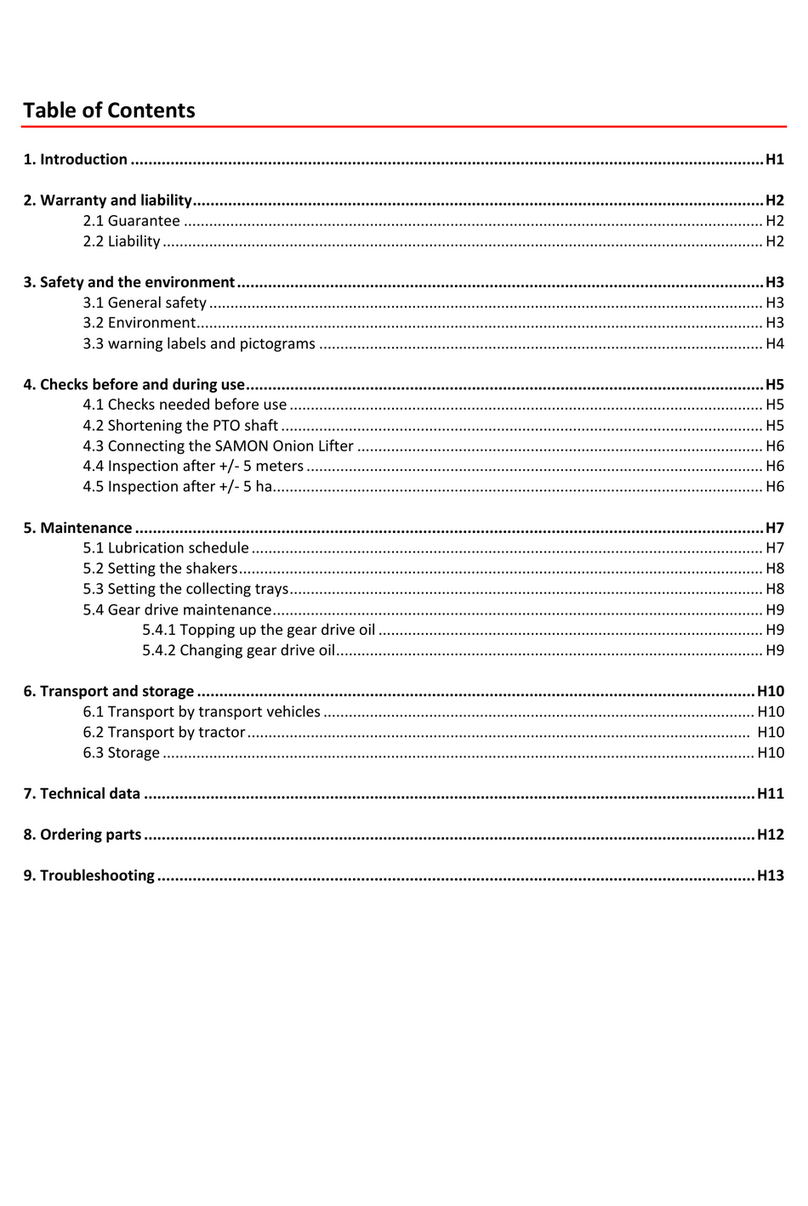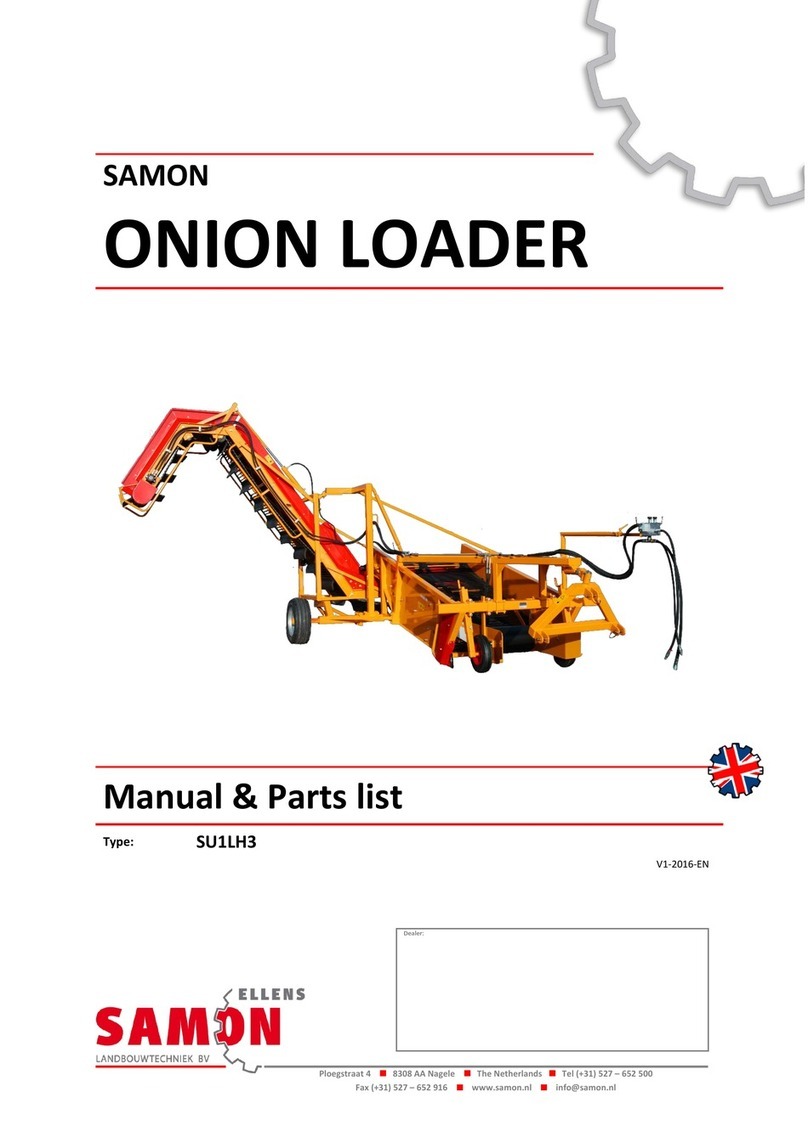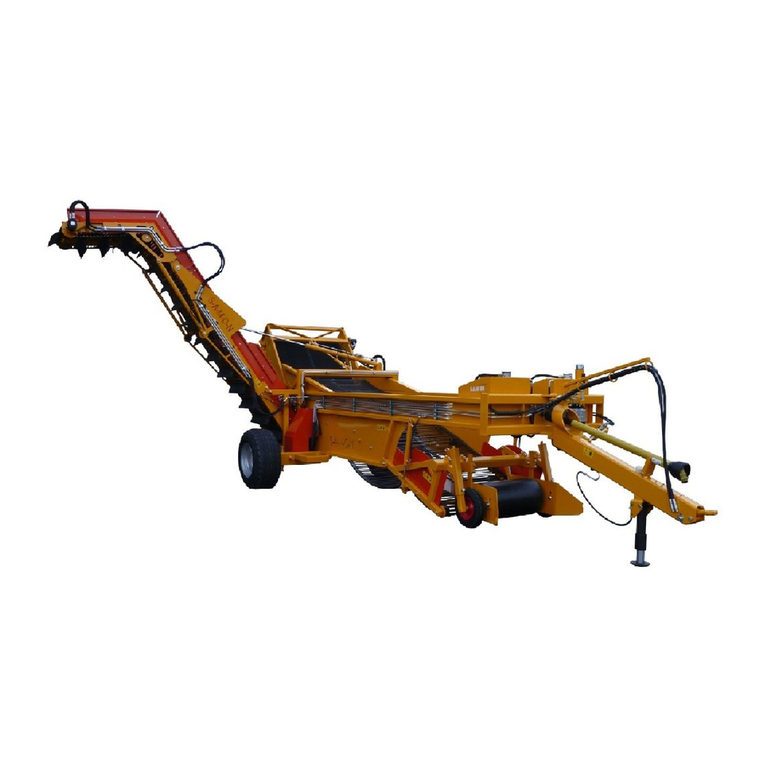Contents.
1. Introduction. ............................................................................................................................................1
2. Warranty an liability.................................................................................................................................2
2.1 Warranty................................................................................................................................................ 2
2.2 Liability. ................................................................................................................................................. 2
3. Safety and Environment. .......................................................................................................................... 3
3.1 General safety........................................................................................................................................ 3
3.2 Environment. ......................................................................................................................................... 3
3.3 Warning labels and pictograms. ............................................................................................................ 4
4. Inspections before and during use............................................................................................................5
4.1 Necessary inspections before using the SU2LS for the first time.......................................................... 5
4.2 Shortening the PTO shaft. ..................................................................................................................... 5
4.3 Necessary inspections before each use................................................................................................. 6
4.3 Inspections during use........................................................................................................................... 6
5. Operation................................................................................................................................................. 7
5.1 Connecting and disconnecting the SAMON onion loader. .................................................................... 7
5.2 Adjusting the drawbar........................................................................................................................... 8
5.3 Adjusting the wheel track...................................................................................................................... 8
5.4 Remote control...................................................................................................................................... 9
5.5 Operating the discharge conveyor. ..................................................................................................... 10
5.6 Intake................................................................................................................................................... 13
5.7 Operating the sieving belts.................................................................................................................. 14
5.8 Steering................................................................................................................................................ 14
5.9 Hedgehog belt. .................................................................................................................................... 15
5.10 Leveling................................................................................................................................................ 16
6. Maintenance. ......................................................................................................................................... 17
6.1 Lubrication schedule............................................................................................................................ 17
6.2 Level and temperature of the hydraulic oil. ........................................................................................ 19
6.3 Replacing the gearbox oil. ................................................................................................................... 19
7. Transport and storage. ........................................................................................................................... 20
7.1 Transport on a vehicle. ........................................................................................................................ 20
7.2 Transport behind a tractor. ................................................................................................................. 20
7.3 Storage................................................................................................................................................. 20
8. Technical information and diagrams....................................................................................................... 21
8.2 Technical information.......................................................................................................................... 21
8.1 Hydraulic diagram of hydraulic motors. .............................................................................................. 21
8.2 Hydraulic diagram of hydraulic cylinders ............................................................................................ 22
8.3 Electric diagram for remote control .................................................................................................... 23
8.4 Electric diagram for main cabinet........................................................................................................ 24
9. Ordering parts. ....................................................................................................................................... 25
10. Troubleshooting. .................................................................................................................................... 26
11. EG Declaration of Conformity................................................................................................................. 27
































